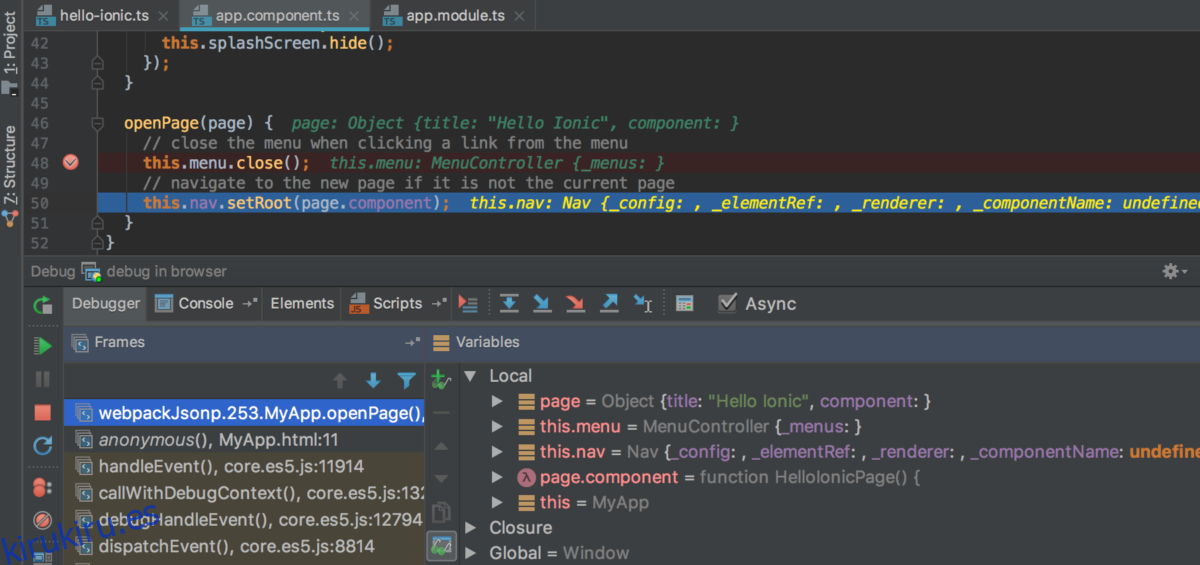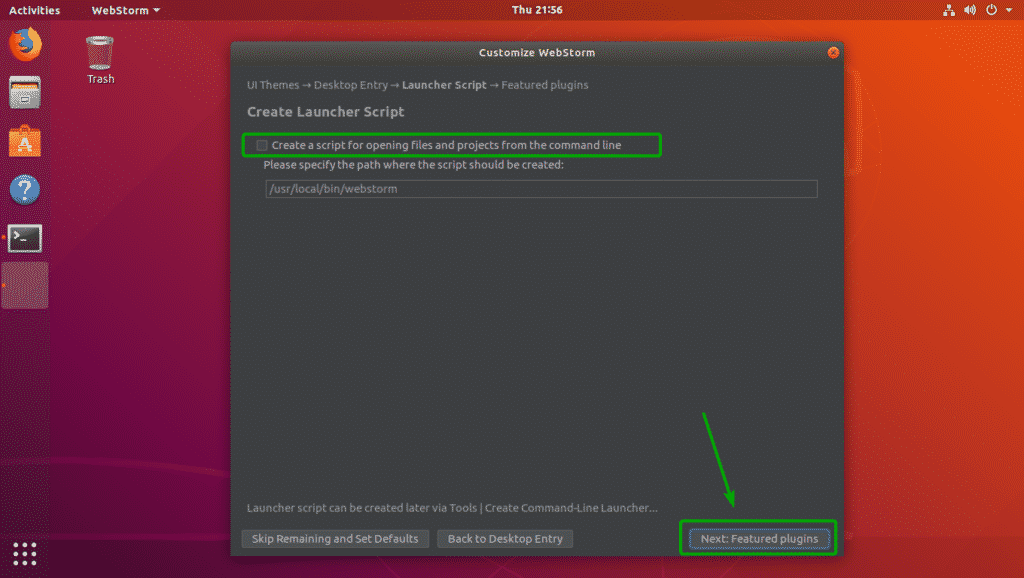


JETBRAINS WEBSTORM LINUX CODE
You can return to the editor and view documentation for other code elements that will open either in the popup or in a new tab in the tool window. Right-click the tab with the documentation in the documentation tool window and enable the Keep This Documentation option.Īfter that, the current documentation tab will be pinned. The asterisk symbol ( *) on the documentation tab means that the tab is not pinned, so its content will be replaced by documentation for another code element that you select in the editor. If the popup appears, press Control+Q again to switch to the tool window. Place the caret at the required code element and press Control+Q. You can open a piece of documentation for a specific code element in the tool window and keep viewing documentation for other elements in your current file. In the Documentation tool window, click the icon on the tool window toolbar and disable the Show Documentation Popup First option. In the quick documentation popup, click and disable the Show Documentation Popup First option. You can change the settings to view documentation in the tool window. With the default settings, pressing Control+Q ( View | Quick Documentation) opens quick documentation in a popup. The documentation will be shown in a popup, but you can configure the IDE to display it in the tool window right away. To view documentation for a symbol at caret with documentation popup on hover disabled, press Control+Q or select View | Quick Documentation from the main menu. In the Settings dialog ( Control+Alt+S), go to Editor | Code Editing | Quick Documentation and clear the Show quick documentation on hover checkbox. You can configure the IDE to display the popup only after you explicitly invoke the Quick Documentation feature.Ĭlick in the popup and disable the Show on Mouse Move option. To specify the delay after which the popup should appear, in the Settings dialog ( Control+Alt+S), go to Editor | Code Editing | Editor Tooltips and enter the necessary value in the Tooltip delay field.īy default, the quick documentation popup appears as you hover the mouse over code elements. Specify the delay for documentation popup Refer to the section Useful editor configurations for details. Note that for this feature to work, you need to enable it in the General page of the editor settings. Rotate the mouse wheel while keeping the Control key pressed. Configure the Quick Documentation popup Change the font size of quick documentationĬlick in the quick documentation popup, select Adjust Font Size and move the slider. To toggle the focus of the Quick Documentation popup and the Documentation Tool Window, press Control+Q sequentially. Press Control+Q again to open this documentation in the Documentation tool window.Ĭlick in the popup to change the font size, display the quick documentation toolbar, or go to the source code. Place the caret at the symbol and press Control+Q or select View | Quick Documentation from the main menu. Hover the mouse over the necessary symbol in the editor.

Quick Documentation in a popup View documentation for a symbol at caret The behavior of quick documentation lookup is configured in the Show documentation popup in field on the Code Completion page of the Settings dialog. When you explicitly invoke code completion, then quick documentation for an entry selected in the suggestion list can be displayed automatically. See JSDoc comments for details.īy default, documentation is shown in the Documentation popup but you can configure it to appear in the Documentation tool window. To create a comment, position the caret before the declaration of the method/function or field to document, type the opening block comment /**, and press Enter. See JavaScript documentation look-up and TypeScript documentation look-up for details.įor a project symbol or for a symbol from the project dependencies, WebStorm generates the documentation from the corresponding JSDoc comment.

Quick Documentation Look-up lets you view reference for symbols from your project and from its dependencies as well as for standard JavaScript objects and methods.


 0 kommentar(er)
0 kommentar(er)
